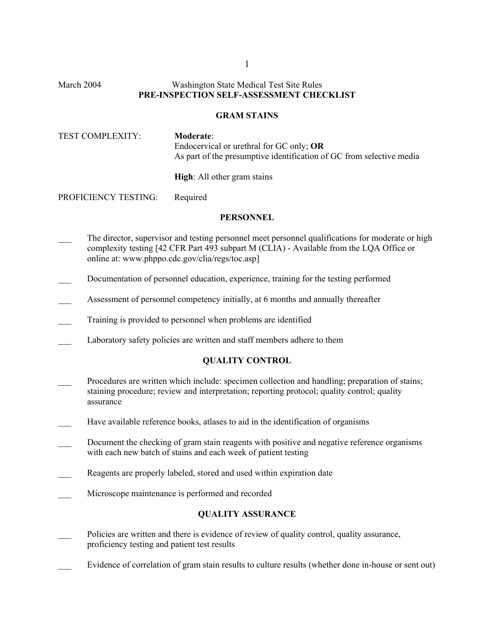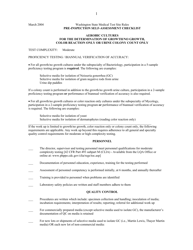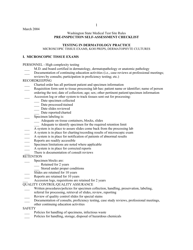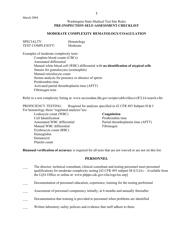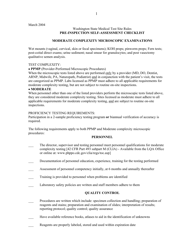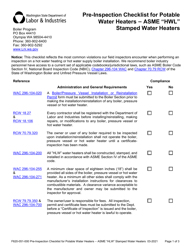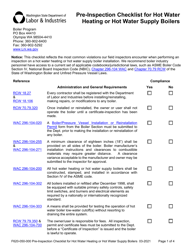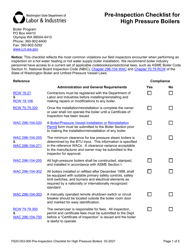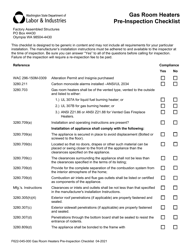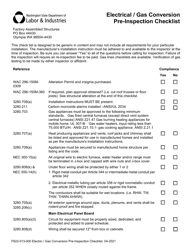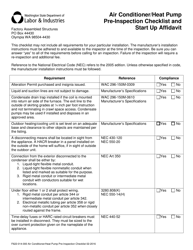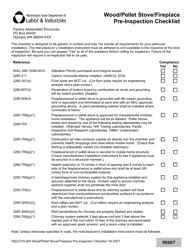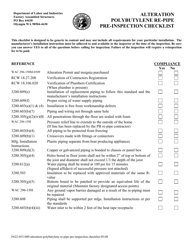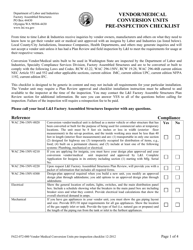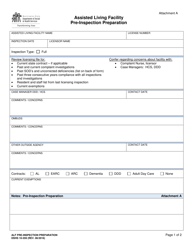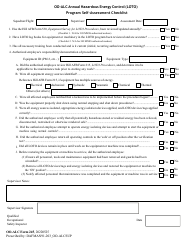Pre-inspection Self-assessment Checklist - Gram Stains - Washington
Pre-inspection Self-assessment Checklist - Gram Stains is a legal document that was released by the Washington State Department of Health - a government authority operating within Washington.
FAQ
Q: What is a pre-inspection self-assessment checklist?
A: A pre-inspection self-assessment checklist is a tool used to evaluate the compliance of a facility with specific guidelines or standards before an inspection.
Q: What is a Gram stain?
A: A Gram stain is a laboratory technique used to categorize bacteria into two major groups: Gram-positive and Gram-negative.
Q: Why is a Gram stain important?
A: A Gram stain is important because it provides valuable information about the bacteria present in a sample, which can help diagnose and guide appropriate treatment for infections.
Q: What is the purpose of the pre-inspection self-assessment checklist for Gram stains?
A: The purpose of the pre-inspection self-assessment checklist for Gram stains is to ensure that facilities conducting Gram stain procedures are following the necessary guidelines and best practices to maintain accurate and reliable results.
Q: What should be included in the pre-inspection self-assessment checklist for Gram stains?
A: The pre-inspection self-assessment checklist for Gram stains should include items such as proper staining techniques, maintenance and calibration of equipment, training and competence of personnel, quality control measures, and adherence to safety protocols.
Q: Who should use the pre-inspection self-assessment checklist for Gram stains?
A: Laboratory facilities and personnel who perform Gram stain procedures should use the pre-inspection self-assessment checklist to ensure compliance with guidelines and standards.
Q: Is the pre-inspection self-assessment checklist mandatory?
A: The requirement to use a pre-inspection self-assessment checklist may vary depending on the regulatory or accreditation requirements of a specific laboratory or jurisdiction.
Form Details:
- Released on March 1, 2004;
- The latest edition currently provided by the Washington State Department of Health;
- Ready to use and print;
- Easy to customize;
- Compatible with most PDF-viewing applications;
- Fill out the form in our online filing application.
Download a printable version of the form by clicking the link below or browse more documents and templates provided by the Washington State Department of Health.
